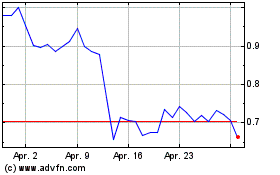Solana Leaves Competition In The Dust: Blazing Speed To Fuel Price Surge?
21 Mai 2024 - 6:39AM
NEWSBTC
Solana (SOL), the self-proclaimed “world’s fastest blockchain,” has
been grabbing headlines for its blazing transaction speeds and
surging token price. But is it all sunshine and rainbows in Solana
land, or are there cracks in the seemingly smooth road? Related
Reading: Solana Blasts Past Resistance: Buckle Up For $330 Breakout
– Analyst Solana Takes The TPS Crown According to CoinGecko data,
Solana blew past competitors like Polygon and Ethereum in
transactions per second (TPS). This translates to faster
transaction processing times, a key factor for scalability and mass
adoption in the blockchain world. However, a closer look reveals a
more nuanced picture. While daily active addresses, which represent
unique users interacting with the network, have indeed increased,
the daily transaction count hasn’t kept pace. This suggests a
scenario where more users are entering the Solana ecosystem, but
they aren’t necessarily conducting a high volume of transactions.
Is this a case of casual crypto tourists dipping their toes in, or
is there something else at play? Fees Take A Tumble, But Is It A
Sustainable Slide? Another interesting wrinkle is the decline in
transaction fees on Solana. This might seem like good news for
users, but it could be a double-edged sword. Lower fees could
indicate that the transactions being processed are less complex and
require lower charges. This could potentially limit Solana’s
revenue generation in the long run. Additionally, a drop in fees
could signal a decrease in network congestion, which might explain
the stagnant daily transaction count. DeFi Keeps The Party Going,
But Caution Flickers A bright spot for Solana is the continued
growth in its Decentralized Finance (DeFi) Total Value Locked
(TVL). DeFi refers to a suite of financial services built on
blockchains, and TVL represents the total value of crypto assets
deposited in DeFi protocols. Solana’s rising TVL indicates its
growing adoption within the DeFi space, where users can lock up
their crypto to earn interest or participate in other financial
activities. This is a positive sign for the overall health of the
Solana ecosystem. Related Reading: Litecoin Put To The Test: Can
LTC Break Through $94? However, a note of caution emerges from
technical indicators like the Money Flow Index (MFI). This
indicator suggests a potential price correction for SOL, hinting
that the current uptrend might not be entirely sustainable. Combine
this with the mixed signals on network activity and the declining
fee structure, and investors are left with a question mark hanging
over Solana’s long-term prospects. A Blockchain In High Gear, But
the Destination Is Unclear Solana’s impressive transaction speeds
and strong DeFi presence are undeniable strengths. However, the
network’s overall activity and tokenomics raise questions about its
long-term viability. Meanwhile, at the time of writing, SOL was
trading at $185, up 7.1% and 26.0% in the daily and weekly
timeframes, data from Coingecko shows. This price surge, coupled
with the network’s breakneck transaction speeds, paints a picture
of a project with immense potential. However, for Solana to truly
become a dominant force, it will need to address the questions
surrounding its network activity and long-term sustainability, not
to mention add some fuel to its price. Featured image from F1,
chart from TradingView
Polygon (COIN:MATICUSD)
Historical Stock Chart
Von Jun 2024 bis Jul 2024

Polygon (COIN:MATICUSD)
Historical Stock Chart
Von Jul 2023 bis Jul 2024
